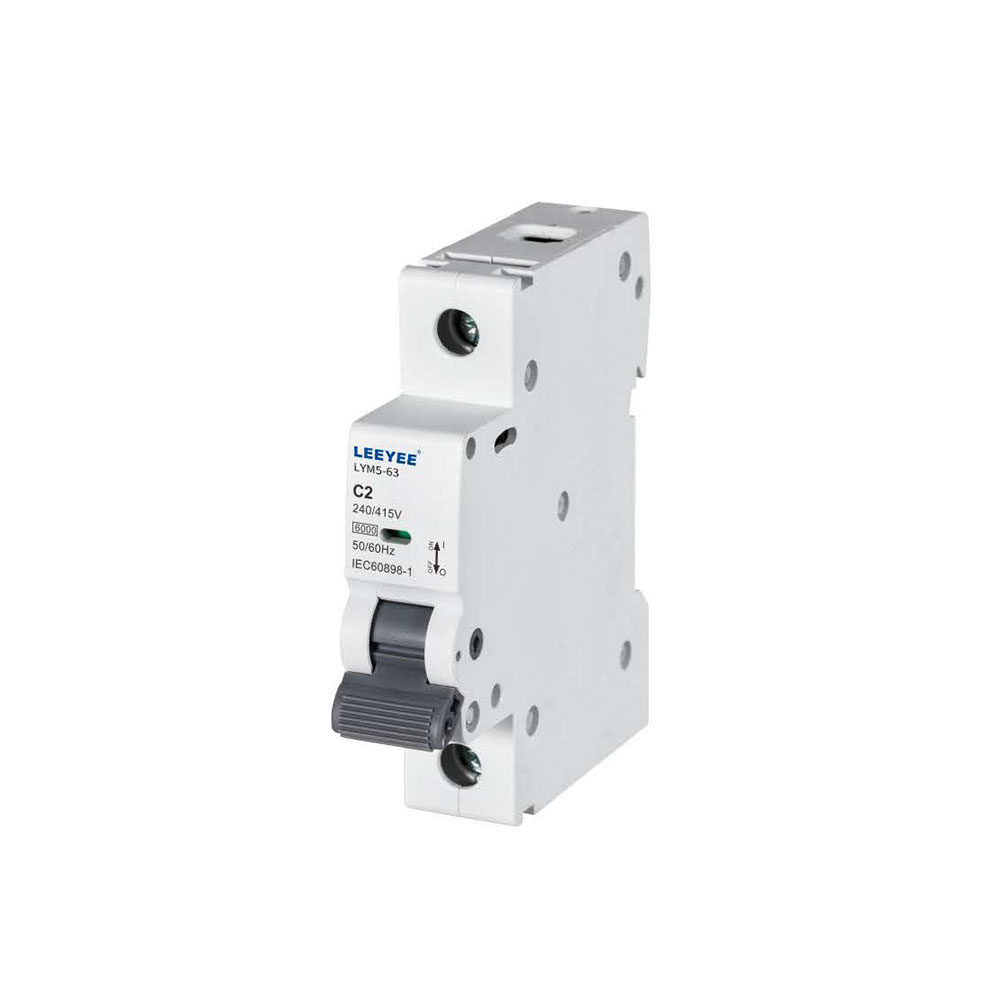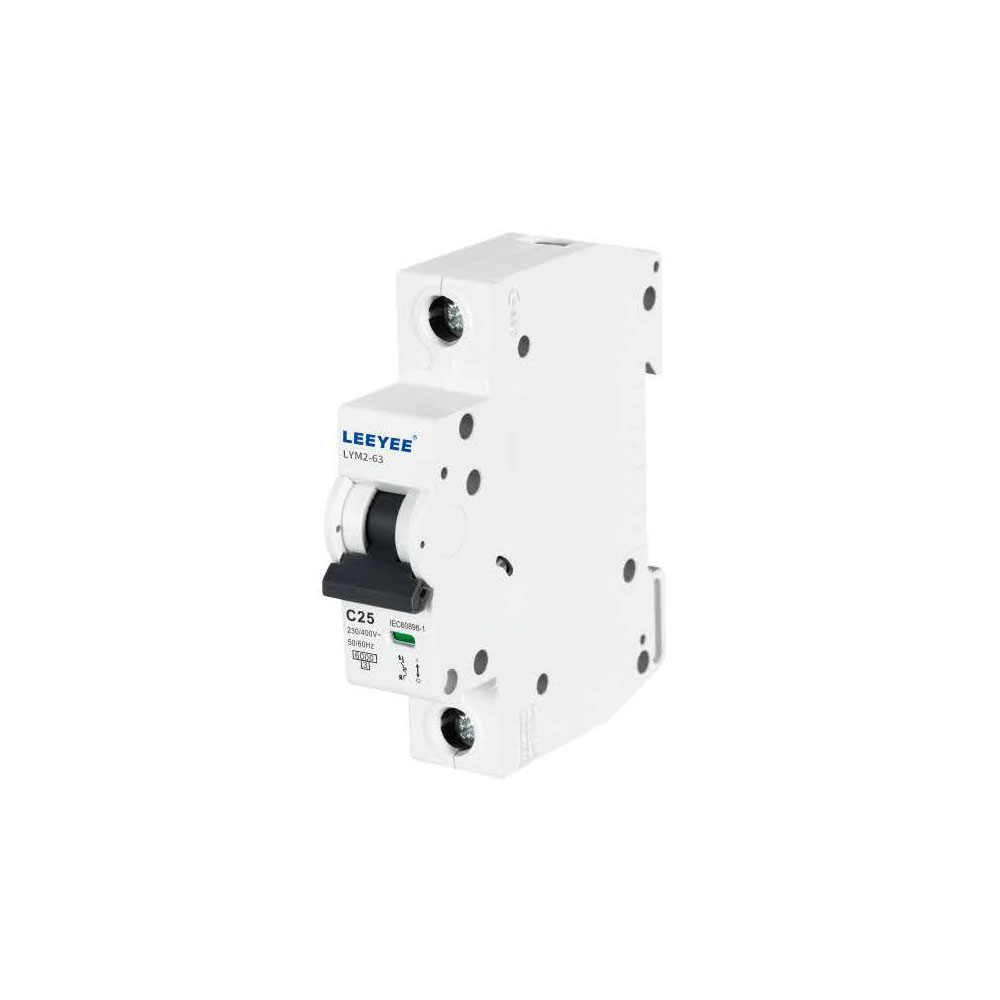In modern electrical systems, protecting circuits and devices from overload and short circuits is crucial. Miniature Circuit Breakers (MCBs) serve as an important electrical protection device, widely used in residential, commercial, and industrial environments. This article will provide a detailed overview of MCBs, including their definition, working principle, types, advantages and disadvantages, applications, selection guidelines, maintenance and troubleshooting, and the differences between MCBs and other types of circuit breakers.
Table of Contents
1. Definition of MCB
A Miniature Circuit Breaker (MCB) is an automatic electrical switch designed to protect circuits from overload and short circuits. It can monitor the flow of current and automatically disconnect the circuit when the current exceeds a predetermined value. The design of MCBs allows for rapid response in the event of a fault, ensuring the safety and reliability of electrical systems.
2. Working Principle of MCB
The working principle of MCBs is primarily based on current monitoring. They typically contain two main components: a thermal protection element and an electromagnetic protection element.
2.1 Thermal Protection Element
When the current exceeds the rated value of the MCB, the thermal protection element generates heat. As the temperature rises, this thermal element expands, ultimately causing the MCB to trip and disconnect the circuit. This mechanism is primarily used for overload protection.
2.2 Electromagnetic Protection Element
In the case of a short circuit, the instantaneous increase in current generates a strong electromagnetic force that rapidly disconnects the circuit. This mechanism allows for quick response, ensuring the safety of equipment and wiring.
3. Types of MCB
MCBs come in various types, mainly classified according to their rated current and characteristic curves. Common types include:
3.1 Type B MCB
Suitable for low-current devices, typically used in lighting and socket circuits. Its rated current ranges from 3A to 32A, making it suitable for household environments.
3.2 Type C MCB
Suitable for medium-current devices, typically used in motors and other inductive loads. Its rated current ranges from 6A to 63A, capable of handling short bursts of high starting currents.
3.3 Type D MCB
Suitable for high-current devices, typically used in large motors and heavy loads. Its rated current ranges from 10A to 125A, capable of managing very high starting currents.
4. Advantages and Disadvantages of MCB
4.1 Advantages
- Quick Reset: MCBs can be manually reset after a fault is cleared, allowing users to quickly restore power.
- Reusable: Unlike fuses, MCBs do not need to be replaced after tripping, saving on maintenance costs.
- Precise Protection: MCBs offer various rated currents and characteristic curves, allowing for precise adjustments based on specific electrical needs.
4.2 Disadvantages
- Higher Cost: The manufacturing and installation costs of MCBs are typically higher than fuses, potentially increasing initial investment.
- Sensitivity to Small Faults: Some low-power faults may not be detected in time by MCBs, leading to equipment damage.
5. Applications of MCB
MCBs have a wide range of applications in modern electrical systems, covering household, commercial, and industrial sectors.
5.1 Residential Applications
In household distribution boards, MCBs are used to protect lighting, appliances, and socket circuits, ensuring safe electricity usage. They effectively prevent overload and short circuits, safeguarding the normal operation of household electrical devices.
5.2 Commercial Applications
In commercial facilities, MCBs protect office equipment, lighting systems, and other electrical devices. By using MCBs, economic losses due to electrical faults can be significantly reduced.
5.3 Industrial Applications
In industrial environments, MCBs are used to protect motors, transformers, and other large equipment. MCBs can handle higher current demands and provide reliable short circuit protection.
6. Differences Between MCB and Other Circuit Breakers
When discussing MCBs, it is essential to understand the differences between them and other types of circuit breakers.
6.1 Definition Differences
- MCB (Miniature Circuit Breaker): Primarily used for protecting low-power electrical devices, suitable for residential and small industrial applications.
- Circuit Breaker: A broader term that encompasses various electrical protection devices, including MCBs, air circuit breakers, and residual current circuit breakers (RCCBs).
6.2 Application Range Differences
- Applications of MCBs: Suitable for residential, commercial, and small industrial electrical systems, capable of handling low-power device protection.
- Applications of Other Circuit Breakers: Air circuit breakers (ACBs) are used in medium to high-voltage electrical systems, capable of managing larger currents and voltages, often found in large industrial equipment.
6.3 Functional and Protective Mechanism Differences
- Function of MCBs: Primarily provides overload and short circuit protection, with a fast response time.
- Function of Other Circuit Breakers: For instance, residual current circuit breakers focus on preventing electric shock caused by leakage current, while air circuit breakers have multiple protective strategies.
6.4 Size and Installation Differences
- Size of MCBs: Typically smaller, suitable for installation in household distribution boards.
- Size of Other Circuit Breakers: For example, air circuit breakers are larger and designed for use in industrial control panels.
7. How to Select and Install MCB
7.1 Selection Guidelines
When selecting an MCB, consider the following factors:
- Rated Voltage and Current: Ensure the selected device’s ratings exceed normal operating currents.
- Type and Purpose of Equipment: Choose the appropriate type of MCB based on the power and nature of the equipment (Type B, C, or D).
- Environmental Conditions: In humid or high-temperature environments, select MCBs that are moisture-resistant or temperature-rated.
7.2 Installation Considerations
MCB installation should be conducted by a qualified electrical engineer. During installation, pay attention to:
- Ensure the power supply is turned off and follow relevant safety regulations.
- Properly connect the MCB according to its rated current and voltage.
- Regularly check the MCB’s operational status to ensure it functions correctly.
8. Maintenance and Troubleshooting of MCB
8.1 Maintenance Advice
Regularly maintain and inspect MCBs to ensure they operate correctly. During inspections, pay attention to:
- Any visible damage or aging of the MCB.
- Check for loose connections to ensure good electrical contact.
8.2 Troubleshooting Common Issues
Common issues and their solutions include:
- Frequent Tripping: May be caused by circuit overload or short circuit; check the circuit load.
- Inability to Reset: May indicate a damaged MCB that needs replacement.
9. Summary
Miniature Circuit Breakers (MCBs) play a critical role in modern electrical systems by effectively preventing circuit overloads and short circuits. Understanding the working principle, types, advantages and disadvantages, and differences between MCBs and other circuit breakers can help users make informed choices in practical applications. As electrical technology continues to evolve, the use of MCBs will become increasingly widespread, providing safer electrical solutions for our lives.


